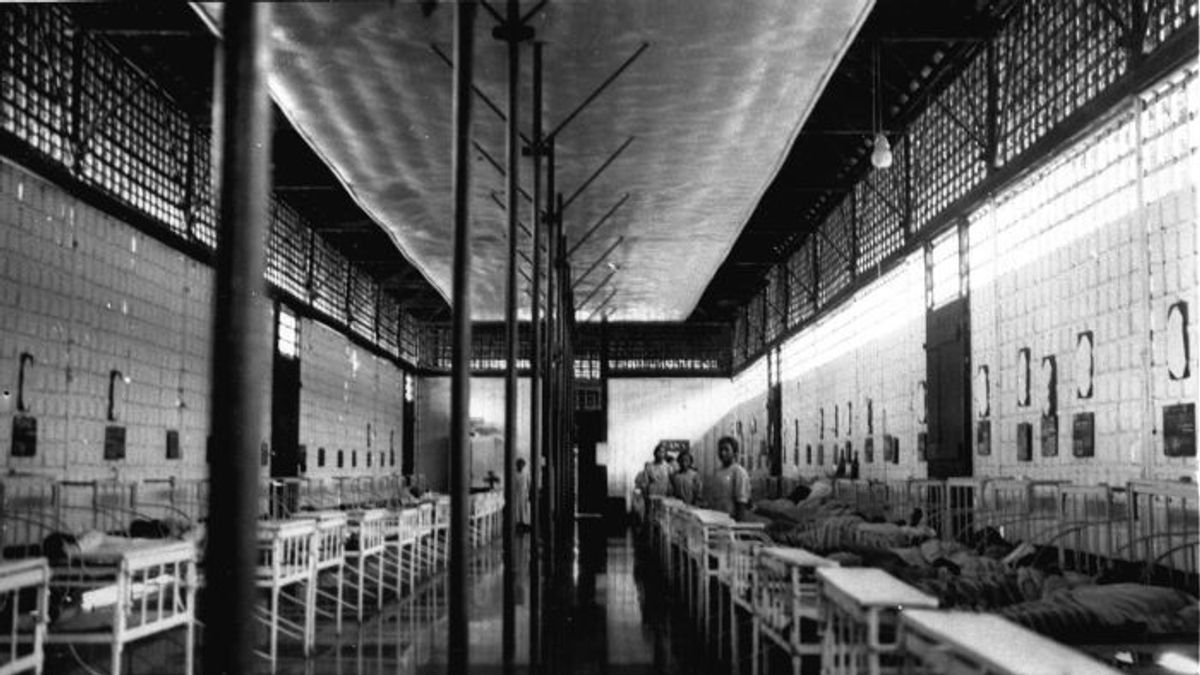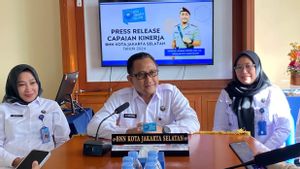JAKARTA - Since the Dutch era, plagues have plagued the archipelago one after another. Malaria, cholera, smallpox, bubonic plague, to the Spanish flu are the most memorable. However, the Netherlands was never ready to fight the plague. His teachings to promote quarantine to break the chain of the spread of the epidemic are far from effective. In fact, it tends to be discriminatory for the natives. Many of the natives prefer to run away than to be quarantined by the invaders.
The movement of the VOC trading cartel in control of the archipelago began to be seen when Batavia was conquered. The VOC immediately built Batavia on the ruins of Jayakarta after the conquest in 1619. The governor-general of the VOC who had served twice (1619-1623 and 1627-1629) Jan Pieterszoon Coen intervened to establish a healthy and dignified environment in Batavia.
Coen began to build infrastructure to settlements that resembled cities in the Netherlands. The development was carried out as a means of solace away from home.
Coen's plan worked for a while. Batavia was then dubbed the Queen of the East. The incomparable beauty of Batavia was praised by the newcomers, especially the poets in Batavia.
But, slowly the plague came to roll over the residents. From cholera to malaria. Excessive exploitation of the environment and the VOC who only thought about profit were the beginning of the destruction of the face of Batavia. In fact, to the point of taking many lives.
“The VOC headquarters in Batavia now has a bad reputation as the source of a deadly plague that continued to be maintained until the nineteenth century. Fish ponds built along the coast of Batavia are ideal breeding grounds for Anopheles mosquitoes. Since 1733, the city has spread a deadly malaria epidemic. Between 1733 and 1795, about 85,000 VOC soldiers and officials in Batavia died from this plague and similar causes,” said Merle historian Calvin Ricklefs in the book History of Modern Indonesia 1200–2008 (2008).

“In 1734, a day of prayer and fasting was announced to ask God to remove the plague from this city. The request of the residents of Batavia, who was often regarded as immoral and unbelieving, did not change the situation. Disease continued to run rampant and, resulting in the death of the Governor-General of the VOC, Dirk van Cloon (1732-1735),” wrote Ricklefs.
After the malaria and cholera epidemics, other outbreaks began to emerge – from the bubonic plague and the Spanish flu. In total, the epidemic took millions of lives and paralyzed activities from the VOC period, until it was taken over by the Dutch East Indies colonial government.
The Spanish Flu, for example. This epidemic was once a scourge for the natives in various regions of the archipelago. The Bumiputras on the island of Java even have their own term describing the enormity of the Spanish flu. They call it: Lara No Siji. It means malignant disease number one.
“It so happened that in the last years of World War I, in the Sultanate of Yogyakarta there was an outbreak of a disease such as influenza, which was called: Spaanse griep. The outbreak of this disease is quite terrible because there are actually words: tomorrow afternoon, Lara will die, afternoon Lara will die (in the morning sick in the afternoon, die, in the afternoon sick in the morning, die), so the population feels very anxious," as written in the History of the Regional National Resurrection. Special Yogyakarta (1977).
The war that was never wonThe Dutch colonial government's resistance to the plague became a war that was never won. Time and again the Dutch tried to break the chain of an epidemic.
The results are always unsatisfactory. The Netherlands even seems to often underestimate the outbreak. This attitude made the Dutch often ignore when an epidemic occurred. Likewise, when the epidemic continues to take its toll, the Netherlands often hands off.

Take, for example, the reign of the Governor-General of the Dutch East Indies, Herman Willem Daendels (1808-1811). The Netherlands instead of promoting resistance to the plague, they actually wash their hands. Daendels chose to immediately move the center of government from an unhealthy place in Old Batavia (the old city), to an area that was not affected by the plague in Weltevreden (now: Banten Field area).
However, that does not mean the Dutch did not make various efforts. The Dutch East Indies government played an active role in fighting the bubonic plague in the 1910s. they carry out disease socialization, eradication of rats and so on. Even if it's not effective.
Escape from quarantineThe Dutch colonial government did not forget to impose regional and residential quarantine as the main training. The problem is, during quarantine, the bumiputras are only provided with little financial assistance, so that the bumiputras feel that quarantine is an ineffective measure. Moreover, many natives, especially farmers, have big responsibilities.
“Although conditions at that time were similar to the current COVID-19 pandemic, the government gave some money to residents during isolation; still residents face financial difficulties because the assistance is not enough," explained Isma Savitri in his writing in Tempo Magazine entitled The Story of the Plague and Quarantine in the Dutch East Indies (2020).
“Those who are mostly farmers are also prohibited from leaving their homes or barracks. In fact, they were in debt for house renovations to the Dutch East Indies government, which forced the residents' houses to be made of walls. Although the government also provides housing renovation subsidies, the amount is not sufficient,” Isma wrote.
This financial problem has made many natives choose to run away from the quarantine center. They would rather live with the bubonic plague than have no income to pay off debts. Even because they are the backbone of the family.
The option of escaping from the quarantine center is also often done by the natives because they do not believe in the handling carried out by the Dutch. Every action that comes out of the mouth of a Dutchman is considered by the natives as the source of misery.
After all, the Dutch colonial government tended to be racist. Only the indigenous population are taken care of by the Dutch government. Meanwhile, Europeans can wander freely in the bubonic plague-prone areas.
Meanwhile, even if there are Europeans who are quarantined, they will receive adequate facilities. Europeans were treated like kings. Nutritious food and regular doctor visits are provided free of charge. But if it's the bumiputras, they only get a place in the barracks which are only made of bamboo construction. As a result, the natives preferred to run away than to be treated inhumanely by the Dutch.
“Food discrimination also occurs. Health access was initially only for Europeans and Chinese people with good financial ability, while the Bumiputra group was the last one. Even the policy of improving slums or vaccination efforts only aims to maintain the stability of the colonized area," concluded Imam Syafi'i in the book Handling COVID-19 in a Political Perspective (2020).
*Read other information about HISTORY or read other interesting articles from Detha Arya Tifada.
Other MEMORIESThe English, Chinese, Japanese, Arabic, and French versions are automatically generated by the AI. So there may still be inaccuracies in translating, please always see Indonesian as our main language. (system supported by DigitalSiber.id)










